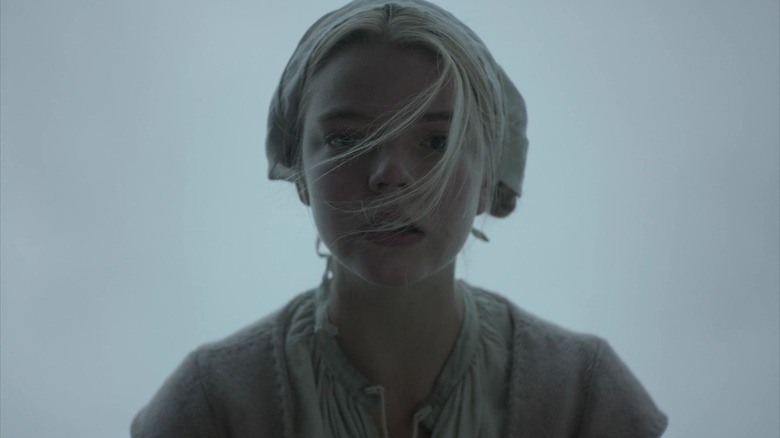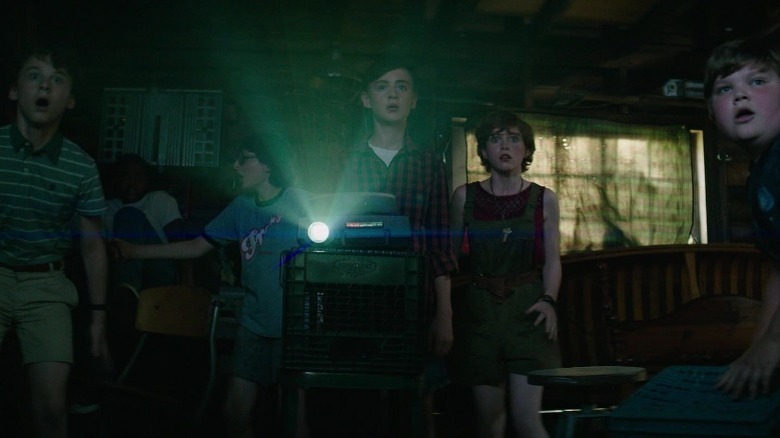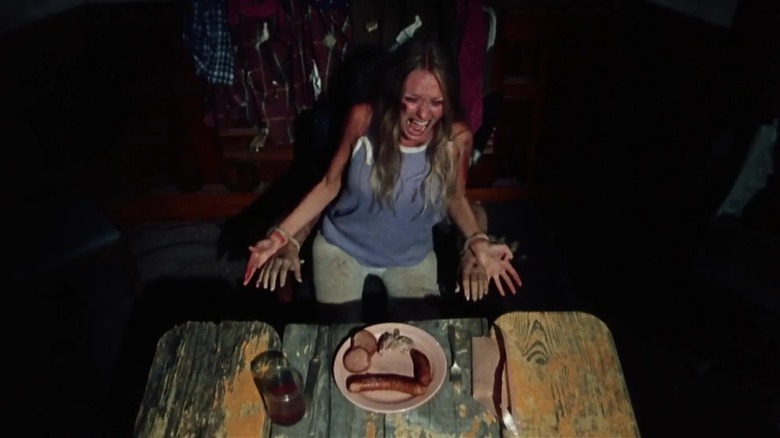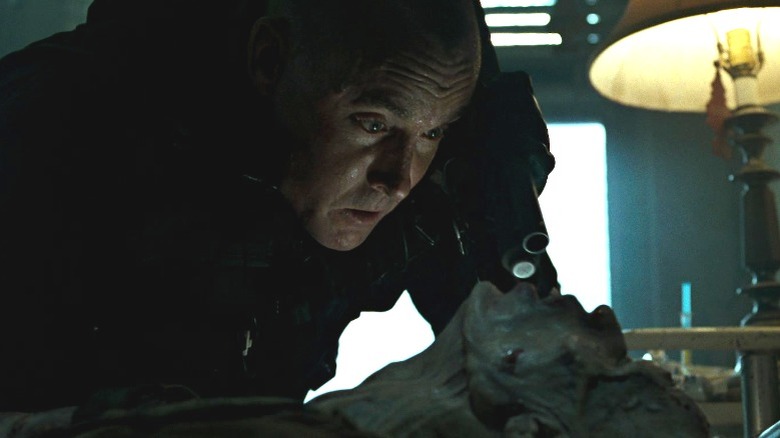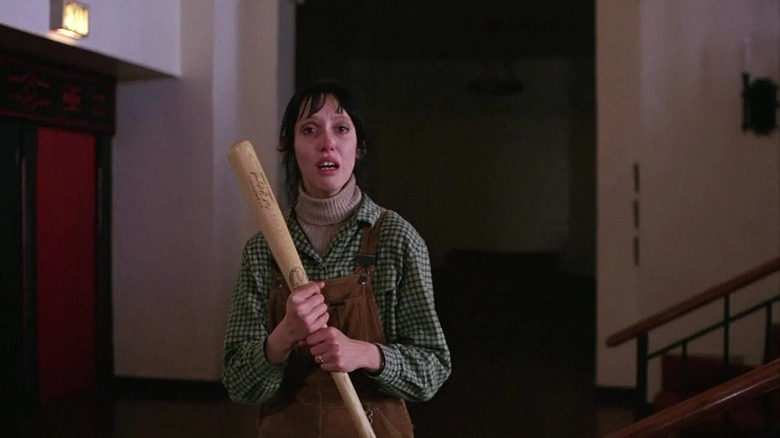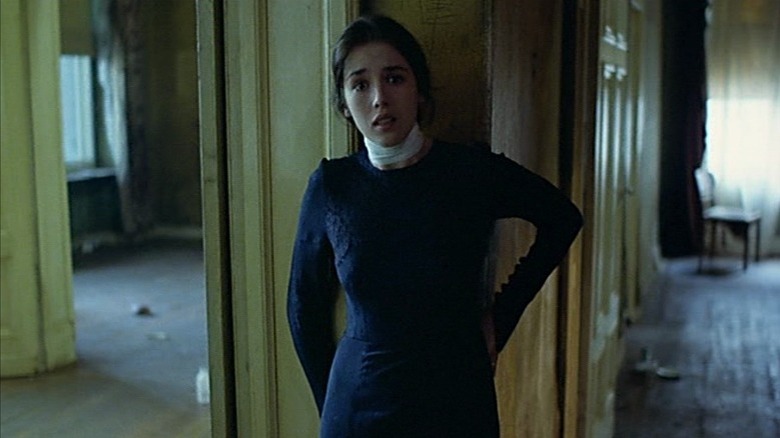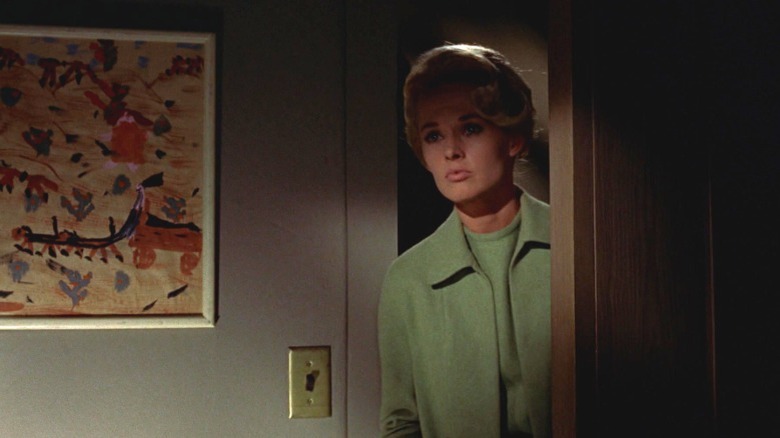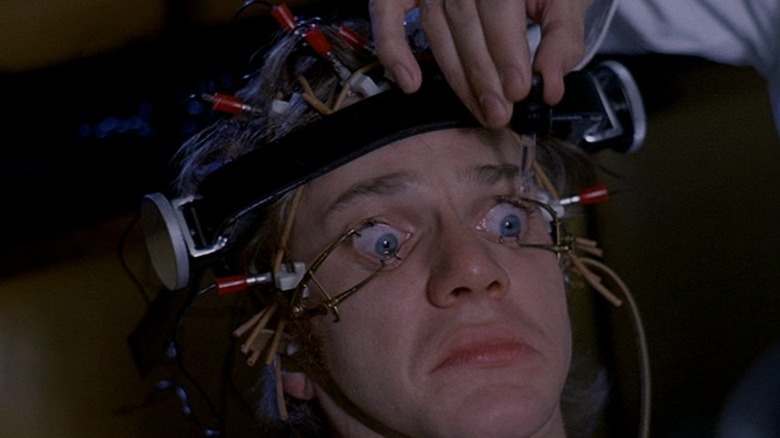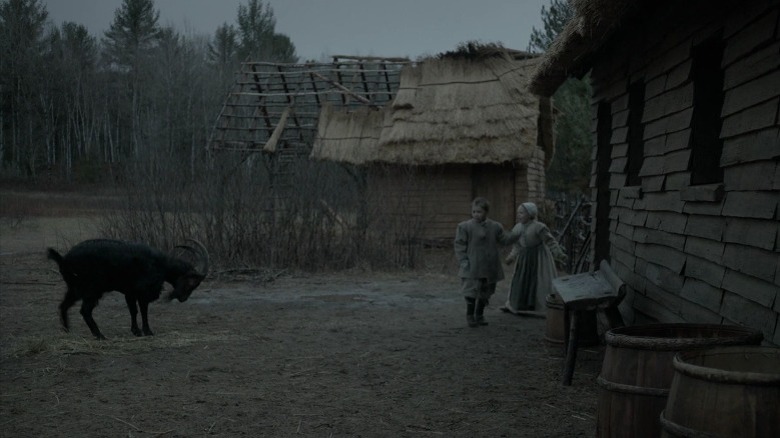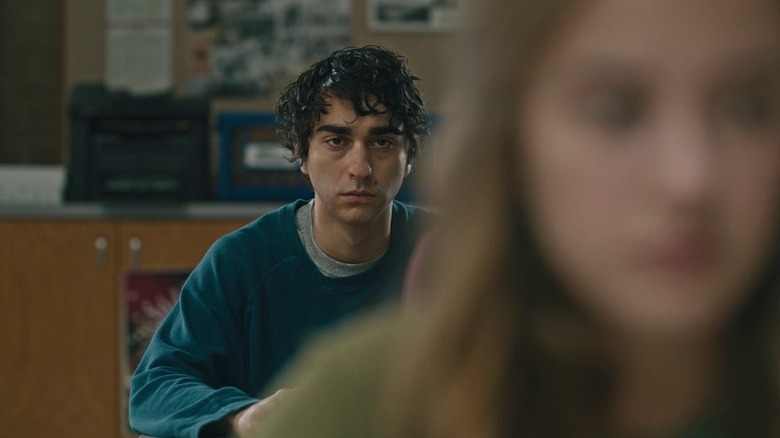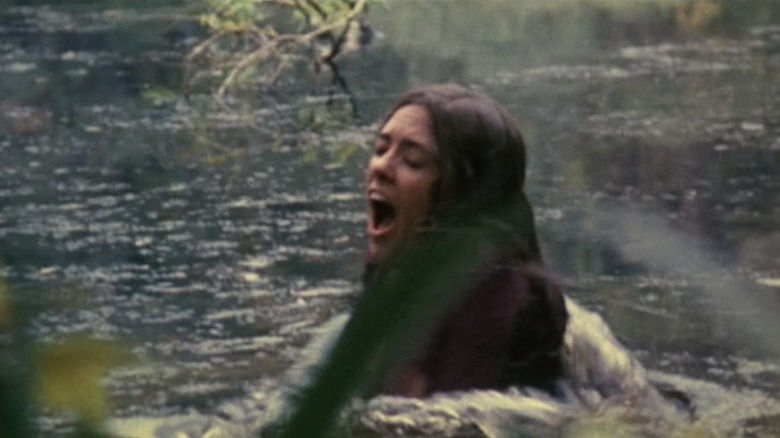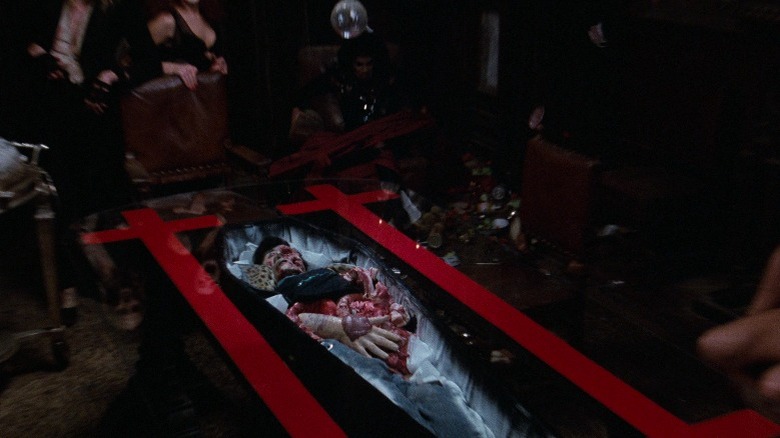Brutal Things Horror Movies Did For Genuine Reactions
The question of how to get the most authenticity possible out of actors has been riling up filmmakers for as long as the film medium has existed. William Wyler ("Ben-Hur") did 40 takes; Robert Bresson ("Pickpocket") insisted on simple movements and monotone line deliveries; Italian Neorealists cast people off the street; Robert Altman ("Nashville") let actors improvise; Andrei Tarkovsky ("Solaris") kept them in the dark about how the story would end.
When it comes to horror, the quest becomes even more daunting: How do you convince viewers that the people they're seeing on screen are genuinely disturbed and terrified, while also securing enough distance between actors and characters to keep the shoot sustainable? Some films have attempted to split the difference by instilling genuine scares, discomfort, and emotional distress on their actors. Others assembled their respective violent scenarios to within an inch of their lives, placing performers into circumstances that were only marginally less dangerous than their characters'.
In some cases, the efforts of the cast and crew could be reasonably described as fearless commitment to their craft, or simply shrewd, harmless scare tactics with the aim of getting a good jolt in the first take. In others, the directors' behavior went decidedly too far, either recklessly or cynically betraying the #1 universal rule of filmmaking: to ensure the safety and wellbeing of all actors and crew members above anything else. From the cute to the callous, here are some notable examples of horror movies and their filmmakers that went out of their way for the sake of genuine reactions.
The kids from It got their first look at Pennywise on camera
Andy Muschietti's "It" is, by a significant margin, the highest-grossing horror film of all time. Among the various reasons for that impressive distinction is the fact that the film was able to access a primal, universal sense of dread in worldwide audiences by centering around a group of kids. Bill Skarsgård's sneering, glassy-eyed take on Pennywise the Clown would have been scary either way, to be sure, but seeing the film's talented teen cast react to him — ahem, to it – with such vulnerable, age-appropriate despair made the suburban nightmare of "It" all the more effective.
As it happens, the filmmakers were very much conscious of what a huge asset that was. So conscious, in fact, that they opted to maximize the intensity of the actors' performances by capturing their real, organic first reactions to Pennywise on camera. As revealed in a behind-the-scenes featurette, Muschietti and company made an effort to keep Skarsgård-as-Pennywise away from the kids as long as possible, and they didn't show them what the character would look like until it was time to shoot the projector scene, in which the Losers Club all get their first glimpse at it. The shock and horror that fill the actors' faces during the scene are real: It was the first time that they were all seeing the film's version of the demon clown together. That everybody was so freaked out by a slideshow speaks volumes to the strength of Pennywise's characterization.
The set of The Texas Chain Saw Massacre was a little too realistic
There has never been another film quite like "The Texas Chain Saw Massacre." Where so much of the slasher genre goes for heightened, fantastical violence and mayhem set against a cushion of familiarity and comfort, Tobe Hooper's totemic 1974 classic is all grime, all queasiness, all the time. In a way, its production was the ultimate triumph of low-budget filmmaking: ugly locations, crude setpieces, and modest production values all put in service of a descent into a discomfitingly tactile hell. In fact, for the actors, the horror may have been a little too tactile.
To achieve his vision on a shoestring budget, Hooper commandeered a grueling, seven-days-a-week shoot that had actors hallucinating from the sweltering Texas heat. Gunnar Hansen was prohibited from taking off his Leatherface suit, and by the end of the month-long production, his stench had become nearly unbearable. The various morbid decorations around the cannibal family's household consisted of real animal carcasses injected with formaldehyde. The prop knife in the finger-slitting scene wouldn't work, and an impatient Hansen ended up cutting Marilyn Burns' finger for real and drawing actual drops of blood for Grandpa (John Dugan) to suck on. One particular scene had Hansen holding a real revving chainsaw up close to Bill Vail's face. The end result was a masterpiece of putrescence and discomfort — but it's certainly for the best that such practices would be impossible under contemporary health and safety regulations on set.
John C. McGinley didn't know the Sloth victim was an actor in Se7en
The intelligence with which director David Fincher and screenwriter Andrew Kevin Walker carry out the seemingly schlocky "capital sins-themed murders" premise of "Se7en" is nearly unmatched in the genre. This is arguably best exemplified by the "sloth" scene, in which, after priming the audience to expect the murders to only be discovered post-fact, the film suddenly shifts into a present-tense horror gear, by revealing the latest victim — a man chained to a bed for an entire year —– to be improbably, horrifyingly still alive. That sudden discovery is so bewildering, in fact, that it even scared the actors.
As actor Michael Reid MacKay revealed in a 2015 interview with Yahoo Movies, after having an entire day's worth of corpse-like prosthetic makeup applied on him, he was instructed to lie perfectly still and hold his breath. Fincher then briefed the actors on the scene without telling them that the victim would be played by a living actor. According to MacKay, when the victim coughs in SWAT leader California (John C. McGinley)'s face, the reaction we see is, in fact, McGinley being authentically scared out of his mind in the first take. Even though 14-hour-long makeup sessions followed by the most minimalist and physically demanding acting imaginable may not be every actor's idea of a great workday, MacKay still looks back fondly on the experience, frequently appearing at conventions to discuss "Se7en" and his various other horror roles.
Stanley Kubrick is alleged to have treated Shelley Duvall harshly on purpose in The Shining
Out of all the notorious cases in film history of directors treating actors with deliberate harshness, coldness, and even cruelty in order to achieve some kind of desired performance effect, none are more infamous than that of Stanley Kubrick and Shelley Duvall on the set of "The Shining." Throughout the decades, there have been numerous reports and stories, ranging from the substantiated to the sensational, about how emotionally and physically demanding the role of Wendy Torrance was for Duvall. According to several accounts, even calibrating for Kubrick's typically unsparing perfectionism, he was especially exacting in his treatment of Duvall, demanding that she rise to a consistent level of emotional anguish that was painful to sustain, even isolating her from the rest of the cast and crew in order to add to Wendy's sense of alienation and despair.
The idea that the director and actress' relationship crossed over into outright emotional or professional abuse, however, is not universally agreed upon. Not only has the story about Kubrick shooting 127 takes of the baseball bat scene been debunked as a myth by biographer Lee Unkrich (via IndieWire), but Duvall herself has repeatedly gone on record stating that, while the shoot did take a toll on her mental health thanks to its long hours and heavy emotions, Kubrick was a warm and friendly filmmaker who maintained a productive artistic relationship with her, give or take some heated arguments.
Andrzej Żuławski reportedly hypnotized actors on the set of Possession
The past decade has popularized a certain kind of performance-driven horror film, which asks talented actresses to translate their intensity to audiences by turning in ferocious, spectacularly disturbed work. From Toni Collette in "Hereditary" to Essie Davis in "The Babadook," from Lupita Nyong'o in "Us" to Jennifer Lawrence in "mother!," many of our era's notable horror flicks have entrusted much of their power to their female stars' heaving, shrieking, trembling showmanship. As any horror fan worth their salt knows, that whole style can be arguably traced back to Isabelle Adjani in "Possession."
The French actress' performance in Andrzej Żuławski's late-blooming 1981 classic is the stuff of legend — a fearless dive into depths of physical and psychological dishevelment that few actors before or since have dared to access. The rest of the cast, from Sam Neill as the baffled husband to Heinz Bennent as the eccentric lover, doesn't lag too far behind, either. To reach that level of actorly extremity, Żuławski may have gone beyond usual directorial tactics.
As Rolling Stone noted in a 2021 piece about the film's long-awaited 4K restoration, in order to bring out the characters' deepest agonies with full force, the Polish director "allegedly hypnotized his performers and put them into a fugue state before shooting certain scenes." For most films, such a wild behind-the-scenes rumor would be all too easy to dismiss as a tall tale. In the case of "Possession," it's actually believable.
Real birds were unleashed on Tippi Hedren during the shooting of The Birds
It's widely known that Alfred Hitchcock was fond of maintaining cold, strict, somewhat patronizing working relationships with his performers. "Actors are cattle," he once infamously remarked to François Truffaut during their 1962 cycle of interviews (via The Guardian). But if there's one case in which the master of suspense's treatment of actors went beyond idiosyncratic grouchiness, it was with Tippi Hedren. Unlike Shelley Duvall on Stanley Kubrick, Hedren did state multiple times over the years that Hitchcock was emotionally and sexually abusive towards her. Even aside from the director's alleged sexual obsession with Hedren, the brutality she was openly subjected to on the set of "The Birds" boggles the mind.
The iconic 1963 horror film dangerously employed real birds in its various set pieces, ranging from crows to gulls to sparrows, and Hedren got the worst of it. In the film's scariest scene, her character, Melanie Daniels, enters an upstairs bedroom that turns out to be filled with birds that have broken in through the roof. The scene took a week to shoot, and although Hedren had been assured that mechanical birds would be used for it, she soon found herself having live, aggressive birds hurled at her for hours on end. Things got to the point where a bird pecked her cheek near her eye, sending her into a mental breakdown. A physician ordered a week of rest — and Hitchcock still attempted to overrule it.
Malcolm McDowell had his eyes pinned open for real in A Clockwork Orange
And here is another Stanley Kubrick creepfest that put its star through significant psychological torment. Malcolm McDowell has often said that he used to have a complicated relationship with "A Clockwork Orange," resenting the film for years for the toll it took on his mental and emotional well-being before coming to terms with its importance to film history. Playing a character like Alex DeLarge — first an unrepentant sadistic psychopath, then a meek and helpless victim to his world's most deeply entrenched systemic cruelties — must have been hard enough, and that's before we even get to the additional hardship of nearly being blinded by metallic speculums.
As McDowell himself detailed in a 2019 interview with The Guardian, the Ludovico technique scene, where Alex is strapped to a chair with his eyes clamped open, is the real thing. Although both Kubrick and the doctor brought in to anesthetize McDowell's eyes — who even appears in the film as the doctor dropping saline solution onto Alex's eyes to keep them from drying up (via NME) — assured him that the procedure would be safe and painless, McDowell soon found that the lid-locks wouldn't stay in place so easily. As they kept sliding off his eyelids, his corneas were scratched, but he didn't feel the pain until the anesthetic wore off. And then he had to go through it all again a week later for a close-up.
The goat in The Witch was actually hostile towards the cast
Dealing with animals on movie sets can often be a daunting endeavor, especially in films which, like Robert Eggers' "The Witch," ask their furry cast members to turn in antagonistic or outright villainous performances. Even so, the havoc that Charlie the goat wreaked on the set of "The Witch" was just something else. A British landrace goat that was selected for having the most menacing Black Phillip-ian look to it, Charlie quickly proved to have just the right temperament for the role of the film's demonic killer beast.
As Eggers and actor Ralph Ineson revealed to The Hollywood Reporter, Charlie behaved defiantly throughout the shoot, furiously fretting about in scenes that required stillness and trying to go to sleep when they did want him to act aggressive. Ineson, whose surly family patriarch William has a particularly belligerent relationship with Black Phillip in the film, revealed that the animosity also extended to their offscreen dynamic: It was "hate at first sight," with Charlie insisting on attacking Ineson at every opportunity.
On the shoot's fourth day, Charlie gored Ineson and dislodged a tendon, forcing the human actor to complete the film on painkillers. After that, Eggers tried to replace Charlie with two different goat puppets, but neither was cutting it. Several dangerous scenes had to be excised, while at least one was accomplished with the use of a leash. Rebellious or not, the darn goat's performance was indispensable.
Alex Wolff made an effort to feed his darkest thoughts in order to inhabit Hereditary's Peter
It has become a borderline cliché for directors and stars to state that their scream-filled gorefests are Actually About Grief And Trauma, but back when "Hereditary" tried out that earnest "spooky stuff + relationship drama" combo in 2018, it was still pretty novel in mainstream horror. That it has since been imitated to the ends of the Earth and back, by fellow indie horror breakout hits and big-budget studio concoctions alike, is a testament to how authentically draining Ari Aster managed to make the emotions in his debut feature.
It's no wonder that Alex Wolff, who plays eldest son Peter Graham, stated in an interview with Vice that he wound up feeling as though he'd developed PTSD from the film's shoot. Watching Peter utterly fail to process his overwhelming mixture of guilt, grief, regret, and anger over being responsible for the gruesome death of his sister, one gets the feeling that a horror movie doesn't even need to be a "horror movie" in order to be a horror movie — eventual piano-wire-assisted demonic freakout notwithstanding. To play Peter, Wolff spent the shoot masochistically forcing as much mental anguish as possible onto himself, by "trying to take in every negative feeling [he] could draw from," to the point of becoming insomniac as his darkest thoughts were allowed to run wild. And he didn't even get Toni Collette-level awards attention for his troubles. Talk about a snub.
Sandra Peabody's co-stars tried to scare her for real in The Last House on the Left
The thing about dangerous and excessive plays for authenticity in horror filmmaking is that, for audiences, it's often way too easy to brush off the underlying workplace safety concerns, so long as the end result is effective. Some of the older entries on this list are, in fact, instances of labor exploitation and mistreatment that couldn't and shouldn't fly in contemporary sets. No movie is worth that level of human suffering. But even if you're the type to excuse the occasional hazardous work environment as long as it contributes to a good cinematic result, there's just nothing that could justify what Sandra Peabody went through on the set of "The Last House on the Left."
Sure, Wes Craven's 1972 directorial debut wore its misogynistic violence and tastelessness on its sleeve, with scenes that were meant to be appalling, break taboos, sink to new depths of darkness in the genre, etc. But none of that should have had any bearing on the way Peabody's co-stars treated her. From Marc Sheffler threatening to push Peabody off a cliff if she didn't get a scene right, to David Hess threatening to assault her for real during the shooting of one of the film's many sexual assault sequences, the set of "The Last House on the Left" is — if those stories are true — a glaring example of chauvinistic abuse passed off as an acceptable catalyst for "realer" acting.
The cast of The Rocky Horror Picture Show didn't know there would be a corpse under the tablecloth
Throughout movie history, there have been many cases in which the cheap, artisanal, improvisational production of indie horror films ultimately enhanced their final result. Yet in most of those cases, including this list's own "Texas Chain Saw Massacre," the scrappiness was welcome because it made things feel scarier. Conversely, watching "The Rocky Horror Picture Show," it's hard to shake off the feeling that the whole thing is unserious, with cheeky, unpolished bedlam held together by good humor and theater-kid enthusiasm. And that's what makes the movie so anarchically brilliant.
The whole set was gleefully helter-skelter, as recounted by Richard O'Brien and composer Richard Hartley in a 2013 interview with The Guardian. Director Jim Sharman repeatedly played pranks on the cast, and their reaction to one of those pranks actually made the final cut. In the scene where Dr. Frank-N-Furter (Tim Curry) pulls off a tablecloth to reveal Eddie's (Meat Loaf) disfigured body under the transparent dinner table, thus revealing that the food the characters have been eating was prepared from human remains, only Curry was aware of the incoming scare. The other actors jumped in genuine shock at the reveal, which helped the movie deliver one of its legitimate, bonafide scary moments. Jumps aside, though, neither Meat Loaf nor any other actors were harmed in the making of the film. Sharman would do anything for a scare, but he wouldn't do that.
